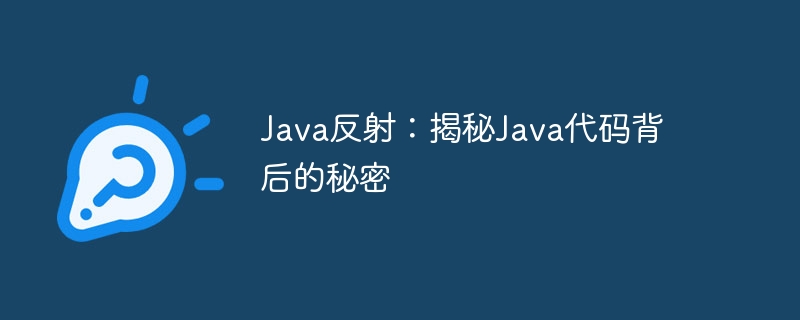Home >Java >javaTutorial >Java Reflection: Uncovering the Secrets Behind Java Code
Java Reflection: Uncovering the Secrets Behind Java Code
- 王林forward
- 2024-02-19 17:30:09628browse

php editor Xiaoxin reveals the Java reflection technology for you and explores the mystery behind the Java code. Java reflection is a powerful mechanism that allows programs to inspect and modify information such as classes, methods, fields, etc. at runtime. Through reflection, developers can dynamically create objects, call methods, access properties, and even obtain annotation information of classes. An in-depth understanding of Java reflection will help improve the flexibility and scalability of code and bring more possibilities to program design.
The principle of Java reflection is to load bytecode class files at runtime and use reflection api to access their metadata. This includes the class's name, fields, methods, and constructors. Once they have this information, programmers can dynamically create objects, call methods, and get field values.
The following is a demo code that shows how to use reflection to create objects:
public class Main {
public static void main(String[] args) throws ClassNotFoundException, InstantiationException, IllegalAccessException {
// 加载类
Class<?> clazz = Class.forName("com.example.MyClass");
// 创建对象
Object object = clazz.newInstance();
// 调用方法
Method method = clazz.getMethod("myMethod");
method.invoke(object);
}
}
In this example, the Class.forName() method is used to load the com.example.MyClass class. Then, the newInstance() method is used to create a new MyClass object. Finally, the getMethod() and invoke() methods are used to call the myMethod() method of the MyClass class.
The reflection mechanism can be used to implement many dynamic functions, such as:
- Create a custom serializer
- Parse XML or jsON data
- Dynamic loading class
- Access private fields and methods
- Modify the behavior of a class
The reflection mechanism is a very powerful tool, but it may also bring some security issues. For example, reflection mechanisms can be used to bypass access controls, leading to the disclosure of sensitive data. Therefore, special care needs to be taken when using the reflection mechanism.
The above is the detailed content of Java Reflection: Uncovering the Secrets Behind Java Code. For more information, please follow other related articles on the PHP Chinese website!

